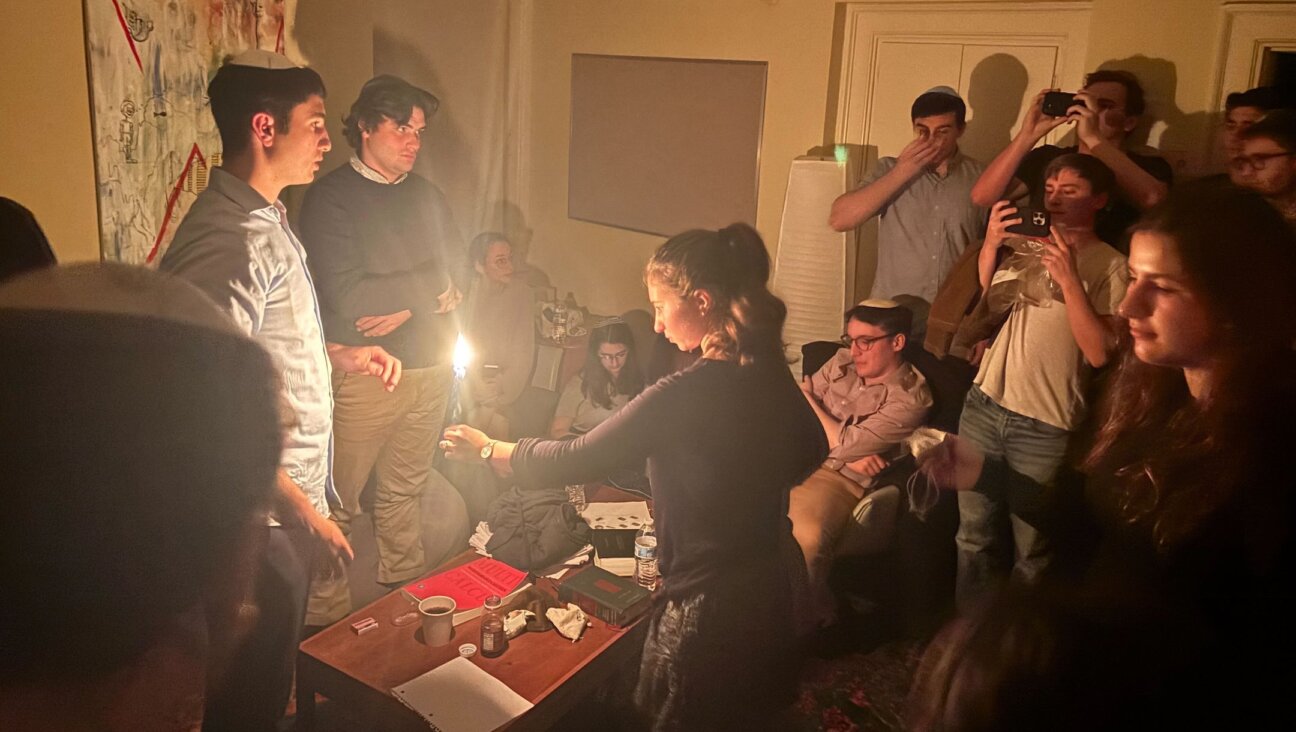Dreams of the Displaced

Graphic by Angelie Zaslavsky
In the aftermath of World War II, roughly 250,000 Jews — most of them Holocaust survivors — lived in displaced persons camps in Europe. Many of these people were attracted to Zionism, and about two-thirds of them eventually would move to British Mandate Palestine or to Israel. In his new book, “Finding Home and Homeland: Jewish Youth and Zionism in the Aftermath of the Holocaust” (Wayne State University Press), Avinoam J. Patt, who holds the Philip D. Feltman Chair in Modern Jewish History at the University of Hartford, explores the role that Zionism played in the lives of the refugees, particularly among the younger generation. Peter Ephross spoke with Patt recently about Zionism’s appeal to displaced persons, and the controversy stoked by Israeli historians on the topic.
Peter Ephross: You focus your book on youth in the DP camps. Why did you decide to focus on the younger generation?
Avinoam Patt: I think it’s really important to try to understand the demographic characteristics of the survivors. Just by who was most likely to survive, it turned out that the surviving population was disproportionately young. Surveys taken at the time estimated that somewhere between 80% and 85% of survivors were between the ages of 15 and 40.
What about the role of the Zionist youth movements in building Zionism among the DPs?
These movements were transformed by the war. Before the war, the Zionist youth movements were focused on recruiting the elite of Jewish youth in Poland, in particular, and training them for their future lives in the Land of Israel. During the war, the Zionist youth movements change their focus from just the elite of Jewish youth to the broader Jewish public and realize that they have to stand up and take this leadership role — both because a lot of the Jewish leadership either leaves Poland or is executed very quickly at the beginning of the war, [and because] those people are focused to participate on Jewish councils. So the youth movements become the alternative leadership that emerges in the ghetto and the Resistance.
You discuss research done by Israeli scholars that questions the Zionism of displaced persons. Is this research part of the larger revisionist trend in Israeli scholarship to question the “Zionist myths” that dominated Israeli history?
Yes, definitely. I mention… some of the new historians, who are looking at the Zionist movement after the war and seeing them as cynically manipulating the survivors with the ultimate aim of the creation of the State of Israel.
You don’t buy it?
I don’t buy it. It’s definitely one of the things that I’m reacting and responding to.
Why not?
They’re arguing against the way that the Yishuv, the Jewish settlement in Palestine, functioned after the war, and they say that they took advantage of these hopeless and apathetic and weak survivors. I don’t buy the description that the survivors were weak and apathetic and hopeless. When you read the materials created by the survivors themselves, they don’t come across as weak and apathetic and hopeless at all. They seem like a resilient and energetic and active group….
The post-Zionist historians say, well, if you look at the numbers, how many Jews actually stay in Israel after 1948? How many survivors? You can play around with the numbers, and some have estimated two-thirds; some have estimated 75%; others say, no, it drops closer to 50% because a lot of the people end up going to the United States when they first have the chance. And that’s why I say we have to separate out our understanding of what Zionism means. It’s not just about going to the Land of Israel; it’s supporting this idea of the creation of the Jewish state, even if for many among the survivors it’s not necessarily for themselves individually.
The kibbutzim that were set up in Europe during this era weren’t exactly like the agricultural kibbutz that is a strong part of the history of Jewish settlement in Palestine and what became Israel. Can you describe the kibbutz as it was set up in Europe, both as part of and outside the DP camps?
In many places, these kibbutzim emerge very quickly after the war — some in Poland, and some in Germany. It’s kind of a matter of necessity, a way to gain access to resources and materials. The ideological part of it is what has to be taught to the people who join the group. One kibbutz, Lochamei Hagetaot al shem Tosia Altman, kept a diary collectively from the time that they came together in 1945. From the diary, you see how they functioned. It’s a lot of orphaned young people who come together; they share an apartment, they have a division of labor: Some people work in the kitchen, some people do cleaning, some people leave the “kibbutz” to go out and do work and bring money back. It’s just a way of getting by. But because it’s organized with the Zionist youth movement, it has the promise of departure from Poland in this case, or from Germany in the DP camps, and the ultimate arrival in the Land of Israel.
You argue that Zionism succeeded in part because it provided essential functions for DPs. What kind of functions?
Zionism was successful because it was best able to respond to the pressing needs of Jews after the war. The Zionist opportunity was not merely defined by its end goal: the creation of a Jewish state in Palestine. It came to be understood as the community provided by the kibbutz, the education it offered, the structure and the chance to work, as well as the hope for departure from Europe. The Zionism of the youth movements in the kibbutzim filled another function: The traumatic individual past of the survivors was replaced with the shared experience of wartime heroism in the ghetto revolts. Regardless of what members’ experiences had been in the war, the kibbutz members adopted the collective heroic identity provided by membership in the group.
Peter Ephross’s articles and reviews have appeared in the Village Voice, Publishers Weekly and Antiques & Collecting Magazine, among other publications.
















